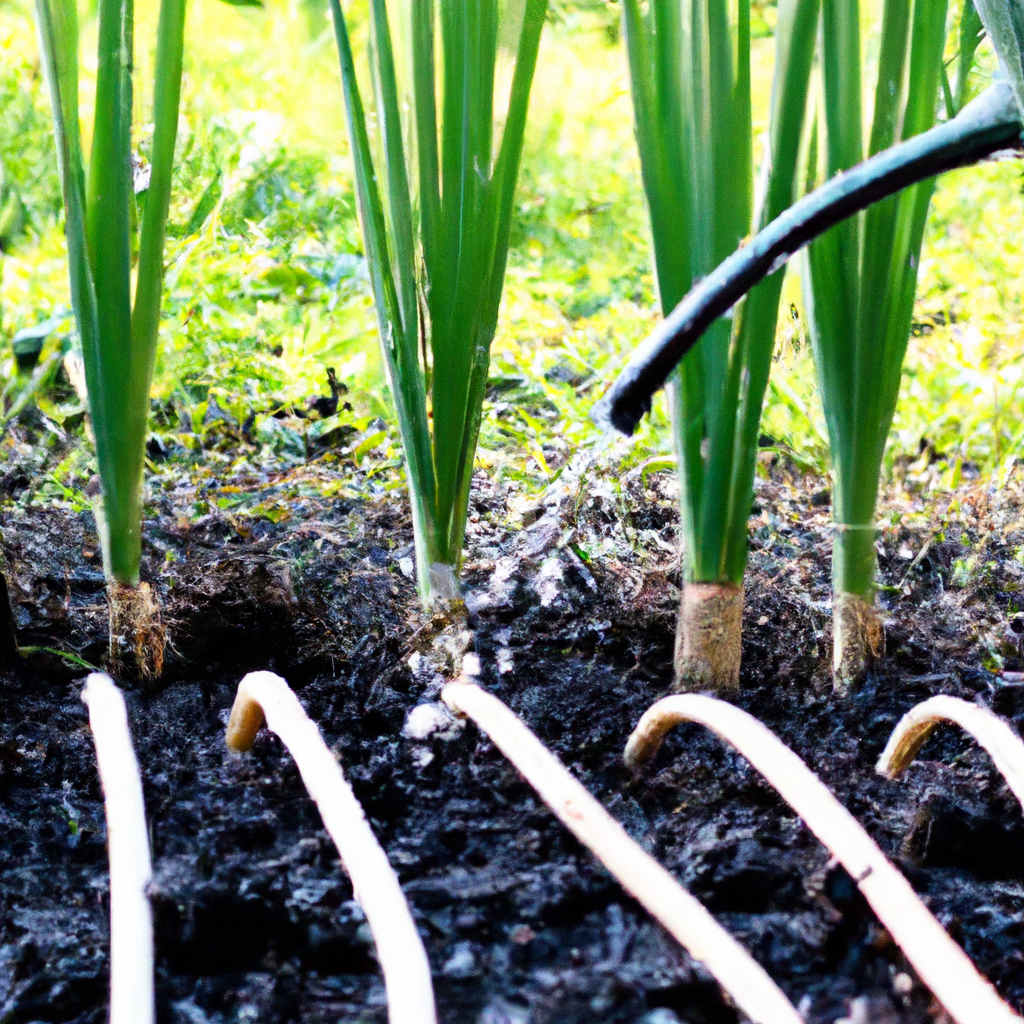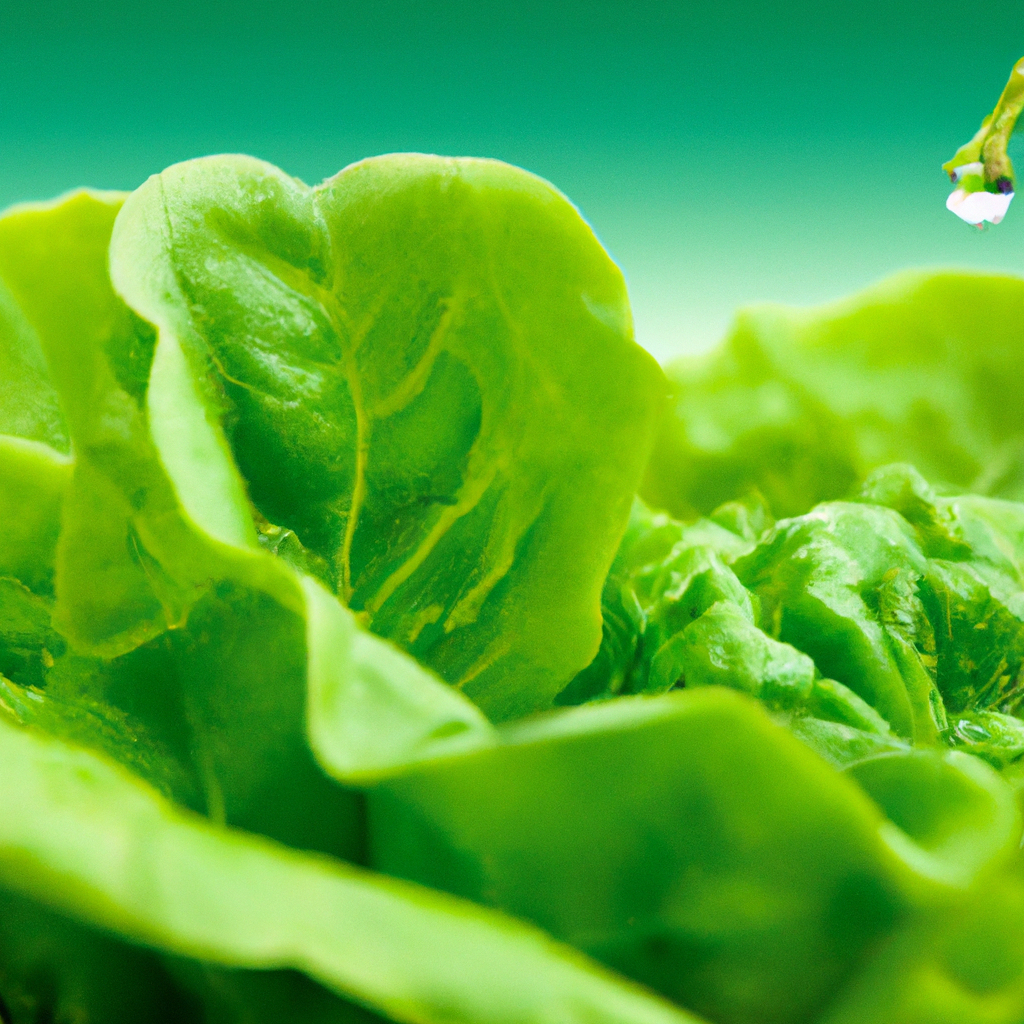
Imagine having access to an abundant and sustainable water source that could nourish your urban farm, all while conserving precious resources and reducing your environmental impact. Well, this is exactly what rainwater harvesting offers for urban farmers. In a world where water scarcity is a growing concern, harnessing the power of rainwater becomes increasingly significant. By capturing rainwater runoff, urban farmers can utilize this free and natural resource to nourish their crops, optimizing growth and yield. Not only does rainwater harvesting provide a practical solution to water scarcity, but it also promotes self-sufficiency and resilience in a rapidly urbanizing world. Join us as we explore the profound significance of rainwater harvesting in urban farming and its potential to revolutionize the way we grow food in our cities.

I. Factors Contributing to the Importance of Rainwater Harvesting in Urban Farming
A. Limited Water Resources in Urban Areas
In urban areas, water resources are often limited due to population density and increasing urbanization. As cities expand, the demand for water increases, resulting in strain on existing water supplies. Rainwater harvesting helps alleviate this strain by providing an additional source of water for urban farming, reducing the dependency on local water sources.
B. Increasing Demand for Sustainable Agriculture
There is a growing demand for sustainable agriculture practices in urban areas. Urban farming is seen as a solution to food security and environmental challenges. Rainwater harvesting supports sustainable agriculture by enabling urban farmers to cultivate crops and raise livestock without putting additional pressure on water resources.
C. Climate Change and Water Scarcity
Climate change has led to unpredictable weather patterns, including droughts and extreme rainfall events. These changes disrupt traditional farming practices and exacerbate water scarcity issues. Rainwater harvesting helps mitigate the impact of climate change by capturing and storing rainwater during periods of excess rainfall, which can then be used during dry spells or droughts.
D. Mitigation of Flood Risks
Urban areas are prone to flooding due to the high volumes of impervious surfaces, such as concrete and asphalt, which prevent rainwater from infiltrating the ground. By implementing rainwater harvesting systems, urban farmers can reduce the volume of stormwater runoff, thus mitigating flood risks and reducing the strain on urban drainage systems.
II. Rainwater Harvesting Techniques for Urban Farming
A. Rooftop Rainwater Harvesting
Rooftop rainwater harvesting involves collecting rainwater that falls on rooftops and channeling it into storage tanks or reservoirs. This technique is particularly suited for urban farming as it utilizes existing infrastructure and can be easily implemented on residential, commercial, and institutional buildings. It is a cost-effective method that minimizes water loss and reduces the load on stormwater drainage systems.
B. Ground-Level Rainwater Harvesting
Ground-level rainwater harvesting involves capturing rainwater directly from the ground surface and diverting it to storage facilities. This technique is suitable for urban farming areas with open spaces or permeable surfaces. It can be done through the use of swales, rain barrels, or infiltration basins. Ground-level rainwater harvesting helps replenish groundwater reserves and reduces surface runoff, contributing to improved water availability in urban areas.
C. Rainwater Catchment Systems
Rainwater catchment systems involve collecting rainwater from large surface areas, such as parking lots or sports fields, and storing it in underground cisterns or above-ground tanks. These systems allow for the collection of significant volumes of rainwater, which can be used for irrigation purposes in urban farming. They are often employed in community gardens or larger-scale urban farming projects.
D. Rain Gardens
Rain gardens are designed to capture rainwater runoff from rooftops, walkways, or paved areas and allow it to infiltrate into the ground. These gardens are typically planted with native vegetation capable of absorbing excess water. Rain gardens offer multiple benefits in urban farming, including reducing urban heat island effects, improving water quality, and providing habitats for beneficial insects and wildlife.

III. Benefits of Rainwater Harvesting in Urban Farming
A. Water Conservation
Rainwater harvesting helps conserve water by reducing dependency on freshwater sources. By capturing rainwater, urban farmers can minimize the use of potable water for irrigation purposes, thereby conserving scarce water resources. This conservation strategy is particularly crucial in urban areas where water scarcity is a pressing issue.
B. Cost Savings
Utilizing rainwater for irrigation can result in significant cost savings for urban farmers. By reducing reliance on municipal water supplies, farmers can lower their water bills and operational expenses. Additionally, rainwater is free and abundant, making it a cost-effective alternative to other water sources.
C. Sustainable Irrigation
Rainwater is naturally free of chemicals and chlorine typically present in tap water. Therefore, it provides a healthier and more sustainable irrigation option for urban farming. By using rainwater, farmers can avoid potential contamination of soil and crops, ensuring that their produce meets high quality and safety standards.
D. Improved Crop Health and Yield
Rainwater is rich in nutrients, which can benefit the growth and development of crops. By utilizing rainwater for irrigation, urban farmers can provide their plants with natural and balanced nutrients, resulting in improved crop health, enhanced flavor, and increased yields. This not only benefits the farmers financially but also contributes to food security in urban areas.
IV. Steps to Implement Rainwater Harvesting Systems in Urban Farms
A. Assessing Water Needs and Availability
Before implementing rainwater harvesting systems, it is essential to assess the water needs of the urban farm and evaluate the available water resources. This includes estimating the required amount of water for irrigation, livestock, and other farm activities, as well as analyzing the local rainfall patterns and annual precipitation levels.
B. Designing the Harvesting System
Once the water needs and availability are assessed, the next step is to design an appropriate rainwater harvesting system. This involves determining the size and type of storage tanks, selecting the right components for rainwater collection, and planning the distribution network to ensure efficient water use throughout the farm.
C. Choosing Appropriate Harvesting Techniques
Based on the specific requirements and constraints of the urban farm, suitable rainwater harvesting techniques should be selected. Factors such as available space, infrastructure, and budget will influence the choice between rooftop harvesting, ground-level harvesting, or catchment systems. It is important to consider the compatibility of the chosen techniques with the overall farm design and objectives.
D. Installation and Maintenance
Once the design is finalized, the rainwater harvesting system can be installed and implemented. This includes setting up storage tanks, installing downspouts and gutters for rooftop harvesting, and constructing infiltration basins or rain gardens where necessary. Regular maintenance, such as cleaning storage tanks and inspecting components for damage, is crucial to ensure the longevity and efficiency of the system.

V. Challenges and Considerations in Rainwater Harvesting for Urban Farming
A. Water Quality and Treatment
Rainwater, although generally considered safe for irrigation, can contain contaminants such as airborne pollutants or debris from roofs and catchment surfaces. Implementing appropriate filtration and treatment methods is necessary to ensure the water’s quality and prevent potential health risks for plants and consumers.
B. Space and Structural Constraints
Urban farms often face limitations in terms of available space and structural constraints. The installation of rainwater harvesting systems must take these factors into account to optimize space utilization and minimize disruption to existing infrastructure. Creative solutions such as vertical storage tanks or modular systems can help overcome these challenges.
C. Regulatory Requirements
Different regions may have specific regulations and permits governing rainwater harvesting and its use in urban farming. Familiarizing oneself with these requirements and obtaining necessary approvals is essential to ensure compliance with local laws. Engaging with local authorities and relevant agencies can also help in navigating the regulatory landscape.
D. Education and Awareness
Promoting education and awareness about the benefits and techniques of rainwater harvesting is crucial to encourage its adoption in urban farming. Many urban farmers may be unaware of the potential advantages or may lack the necessary knowledge to implement such systems. Providing training programs, workshops, and outreach initiatives can empower farmers and promote broader adoption of rainwater harvesting practices.
VI. Success Stories and Case Studies of Rainwater Harvesting in Urban Farming
A. Community Gardens and Allotments
Community gardens and allotments have successfully integrated rainwater harvesting techniques into their operations. By collaborating with local residents and encouraging participation, these gardens collect rainwater to meet the irrigation needs of multiple plots, reducing the strain on public water supplies.
B. Rooftop Farms in Cities
Rooftop farms have been increasingly popular in urban areas, particularly in densely populated cities. These farms effectively utilize rooftop rainwater harvesting to grow a wide range of crops and promote local food production. The practice enhances urban green spaces, reduces urban heat island effects, and supports sustainable agriculture in limited land areas.
C. Vertical Farming and Hydroponics
Vertical farming and hydroponics systems have also embraced rainwater harvesting as an essential component to sustain their operations. By capturing rainwater, these innovative farming methods optimize water usage and create a closed-loop system that minimizes wastage. The integration of rainwater harvesting enhances the resource efficiency and sustainability of these high-density farming systems.
D. Permaculture and Agroforestry Projects
Permaculture and agroforestry projects integrate rainwater harvesting into their design principles to maximize water conservation and support diverse ecosystems. These initiatives incorporate features such as swales, earthworks, and contour planting to capture and utilize rainwater efficiently. Such projects serve as examples of sustainable and regenerative farming practices.

VII. Integration of Rainwater Harvesting with Other Sustainable Practices
A. Composting and Organic Farming
Rainwater harvesting can be integrated with composting and organic farming practices to create a holistic and sustainable farming system. Compost, enriched with nutrients and organic matter, can be irrigated with rainwater, providing a nutrient-rich solution for plants while reducing reliance on synthetic fertilizers.
B. Renewable Energy Systems
Combining rainwater harvesting with renewable energy systems, such as solar or wind power, creates a synergistic approach to sustainability. The energy generated can be used to power the pumping and irrigation systems required for rainwater harvesting, further reducing the environmental impact of urban farming.
C. Green Roof and Living Wall Technologies
Green roof and living wall technologies provide additional benefits when integrated with rainwater harvesting. These systems help manage stormwater runoff, reduce heat absorption, and improve air quality. By capturing rainwater for irrigation, these green infrastructure solutions contribute to a more sustainable and resilient urban farming environment.
D. Urban Biodiversity Conservation
Rainwater harvesting supports urban biodiversity conservation by promoting the creation of green spaces and habitats for wildlife. Urban farms that implement rainwater harvesting systems often incorporate features such as ponds, wetlands, or native plantings, which attract and support a diverse range of species. This integration contributes to the restoration and conservation of urban ecosystems.
VIII. Government Initiatives and Incentives for Rainwater Harvesting in Urban Farming
A. Policy Support and Regulations
Governments can play a vital role in supporting rainwater harvesting by enacting policies and regulations that encourage its implementation in urban farming. These policies can provide clear guidelines on rainwater harvesting practices, streamline the permit process, and promote the integration of rainwater harvesting into urban planning frameworks.
B. Financial Assistance and Grants
Financial assistance and grant programs can incentivize urban farmers to adopt rainwater harvesting systems. These programs can offer subsidies or grants for the installation of rainwater harvesting infrastructure, making it more accessible and affordable for farmers. Providing such financial support helps overcome the initial costs associated with implementing rainwater harvesting systems.
C. Collaborative Programs and Partnerships
Collaborative programs and partnerships between governments, non-profit organizations, and private entities can promote awareness and knowledge sharing about rainwater harvesting in urban farming. These initiatives facilitate capacity-building, research, and development, resulting in wider adoption of rainwater harvesting techniques and best practices.
D. Awareness Campaigns and Education
Government initiatives can focus on educating the public and raising awareness about the importance of rainwater harvesting in urban farming. Targeted campaigns and educational programs can help urban farmers understand the benefits, techniques, and economic incentives associated with rainwater harvesting. Engaging with schools, community centers, and agricultural forums can further promote the adoption of rainwater harvesting systems.

IX. Future Prospects and Innovations in Rainwater Harvesting for Urban Farming
A. Smart Water Management Systems
Advancements in technology have led to the development of smart water management systems that optimize rainwater harvesting and irrigation in urban farming. These systems utilize sensors, automation, and data analytics to efficiently monitor water use, adjust irrigation schedules, and optimize water allocation based on real-time weather conditions and crop needs.
B. Sensor Technologies for Precision Agriculture
Sensor technologies, such as soil moisture sensors and weather stations, play a crucial role in efficient rainwater harvesting and irrigation. These sensors provide real-time data on soil moisture levels, rainfall, and evaporation rates. By integrating these sensors with rainwater harvesting systems, farmers can make informed decisions regarding water allocation and irrigation, ensuring optimal crop health and efficient water use.
C. Adaptive Farming Practices
As climate change continues to impact agricultural practices, adaptive farming practices that incorporate rainwater harvesting will become increasingly important. Adapting planting schedules, crop choices, and irrigation methods based on weather patterns and the availability of rainwater will help farmers mitigate the risks associated with changing climatic conditions.
D. Combined Sewer Overflow Management
Rainwater harvesting can play a role in managing combined sewer overflow (CSO) events in urban areas. CSOs occur when stormwater overwhelms the sewer system, leading to the discharge of untreated wastewater into water bodies. By capturing and storing rainwater, urban farms can reduce the amount of stormwater entering the sewer system during heavy rainfall, thus minimizing the occurrence of CSOs.
X. Conclusion
Rainwater harvesting is of paramount importance in urban farming due to various factors such as limited water resources, increasing demand for sustainable agriculture, climate change, and flood risk mitigation. The adoption of rainwater harvesting techniques, including rooftop harvesting, ground-level harvesting, catchment systems, and rain gardens, offers numerous benefits such as water conservation, cost savings, sustainable irrigation, and improved crop health and yield.
Implementing rainwater harvesting systems requires careful assessment of water needs and availability, system design, appropriate technique selection, and proper installation and maintenance. Challenges such as water quality and treatment, space and structural constraints, regulatory requirements, and education and awareness need to be addressed for successful implementation.
Rainwater harvesting in urban farming is being successfully practiced in various contexts, including community gardens, rooftop farms, vertical farming, and agroforestry projects. Integrating rainwater harvesting with other sustainable practices such as composting, renewable energy systems, green roof technologies, and urban biodiversity conservation enhances the overall sustainability of urban farming.
Government initiatives and incentives, including policy support, financial assistance, collaborative programs, and awareness campaigns, can significantly promote rainwater harvesting in urban farming. Future prospects and innovations in rainwater harvesting include smart water management systems, sensor technologies for precision agriculture, adaptive farming practices, and combined sewer overflow management.
In conclusion, rainwater harvesting is a valuable and sustainable practice that can contribute to the success and resilience of urban farming. By harnessing the power of rainwater, urban farmers can minimize their environmental impact, conserve water resources, and support the development of a more sustainable and food-secure future in urban areas.







